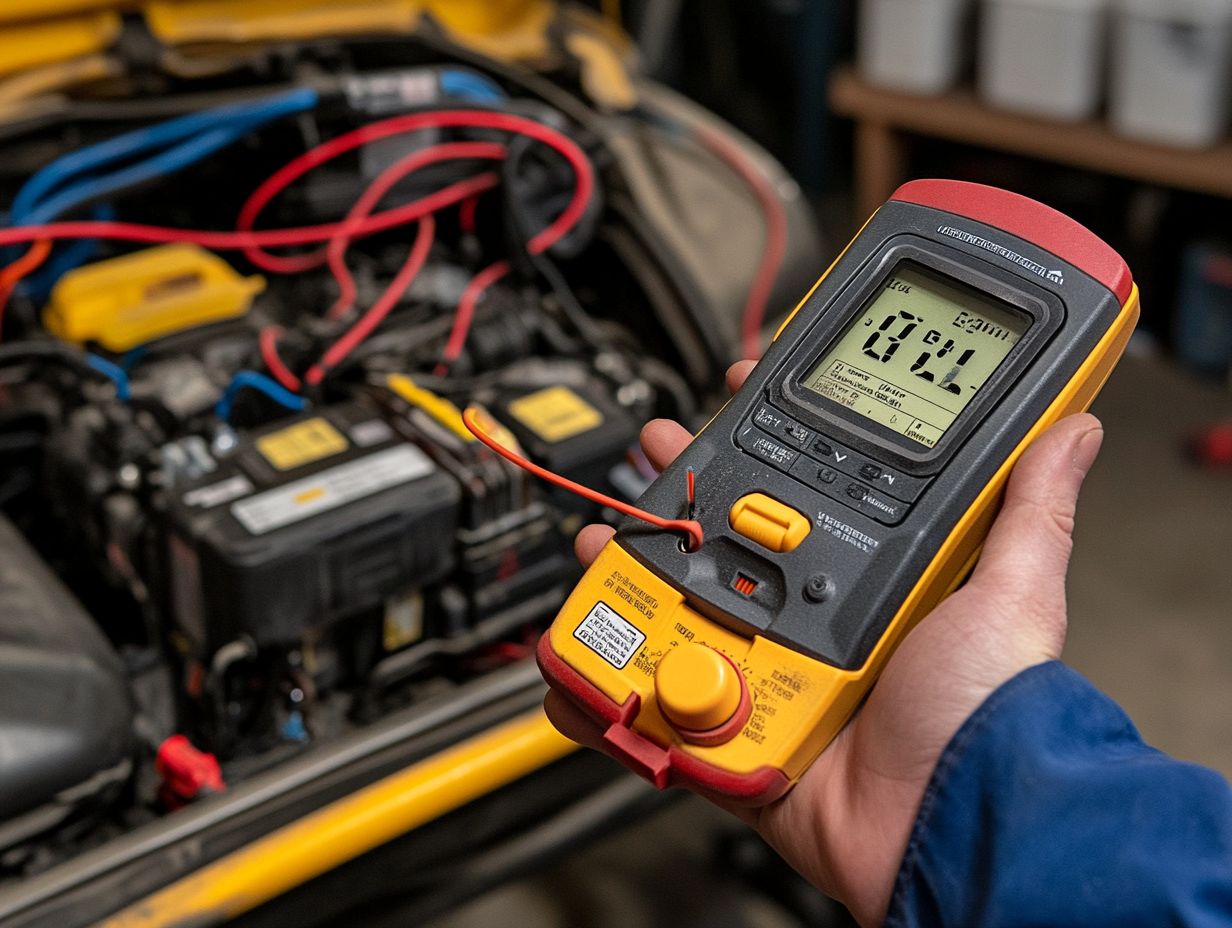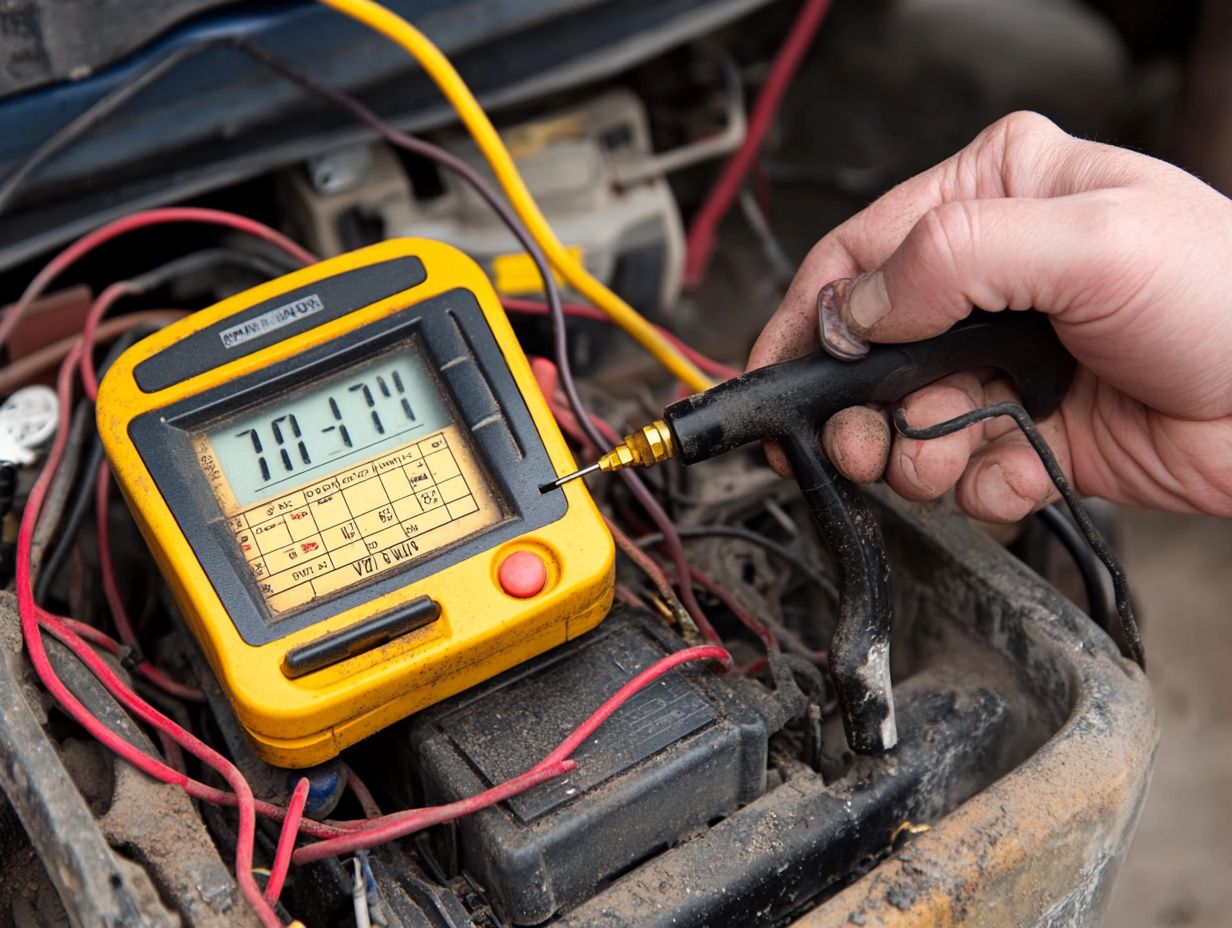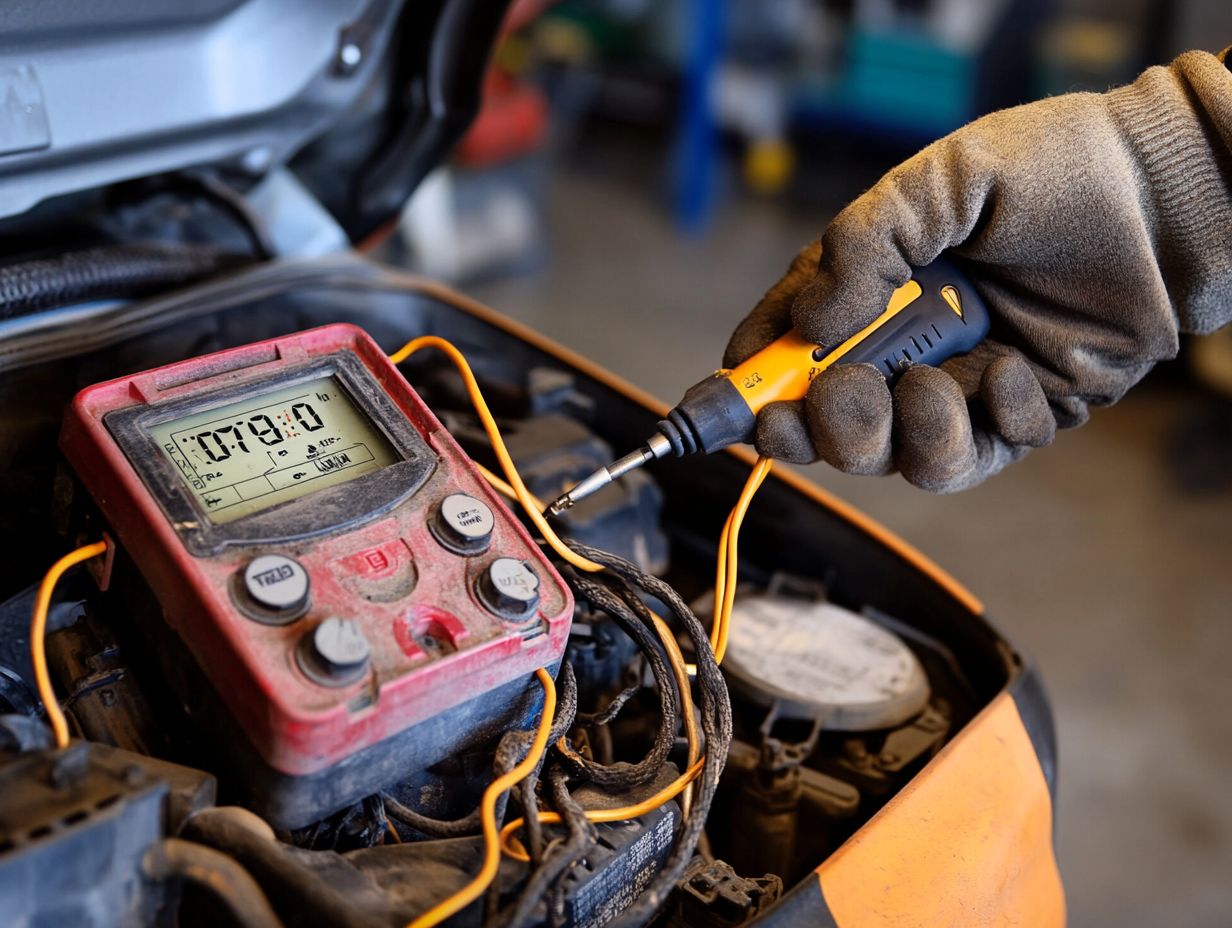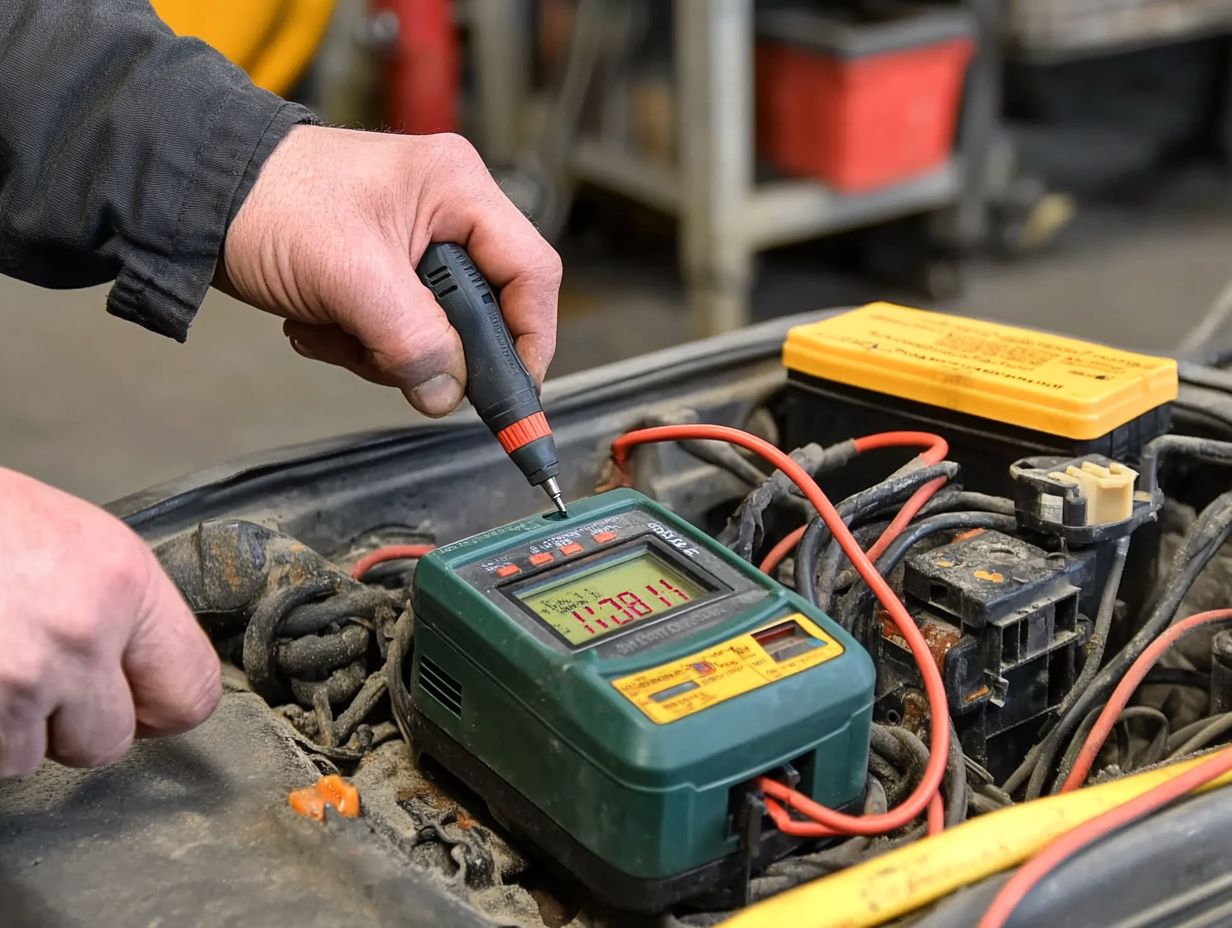How to Know When to Replace Your Battery?
Batteries are indispensable in your daily life, powering everything from your smartphone to electric vehicles.
Understanding battery lifespan is key to maximizing performance and preventing unexpected failures. Let s dive into the factors that influence battery longevity, help you identify the signs that signal it’s time for a replacement, and offer a step-by-step guide for safely changing your battery.
You will discover valuable tips for extending battery life and learn the proper recycling methods for old batteries. Get ready to empower your devices and make informed decisions about battery maintenance!
Contents
- Key Takeaways:
- Understanding Battery Lifespan
- Signs that Your Battery Needs Replacing
- How to Properly Replace a Battery
- Tips for Extending Battery Life
- Recycling Old Batteries
- Frequently Asked Questions
- How to Know When to Replace Your Battery?
- 1. How often should I replace my battery?
- 2. Can I tell if my battery needs to be replaced just by looking at it?
- 3. What are the signs that my battery needs to be replaced?
- 4. Can a battery be damaged even if it’s not very old?
- 5. Should I replace my battery myself or have a professional do it?
- 6. Can a dead battery be revived?
Key Takeaways:

- Monitor your battery’s lifespan: consider age, usage, and temperature.
- Watch for signs of wear: corrosion, leaks, and swelling.
- Follow a guide for safe battery replacement and recycle responsibly.
Understanding Battery Lifespan
Understanding battery lifespan is essential for every vehicle owner, particularly if you drive a Mazda 3. Several factors like environmental conditions and your driving habits can greatly impact its longevity.
In regions like Massachusetts, where winter temperatures can dip dramatically, grasping how cold weather influences battery performance becomes vital. By conducting regular battery checks and following manufacturer guidelines, you can significantly extend the life of your automotive battery.
Factors that Affect Battery Longevity
Several key factors play a vital role in the longevity of your car battery, including regular battery care and the overall health of your vehicle’s electrical system.
Be mindful that temperature fluctuations can greatly affect battery performance. Extreme heat or cold can shorten its lifespan. Your driving habits also matter significantly; frequent short trips may prevent the battery from fully charging.
Incorporating routine maintenance practices is essential. Regularly checking battery terminals for corrosion and ensuring the connections are secure can significantly prolong battery life.
Automotive technicians can offer valuable insights into how these various elements interact, enabling you to adopt the right strategies for battery care tailored to your specific conditions. This proactive approach will enhance both performance and reliability.
Signs that Your Battery Needs Replacing
Is your battery showing signs it needs replacing? Recognizing these signs can spare you from unexpected breakdowns, especially in a vehicle like the Mazda 3, where battery performance is crucial.
You should look for common indicators such as your car struggling to start, a weak engine crank, or visible signs of wear like battery corrosion or a damaged case.
By understanding these symptoms, you can make timely decisions about battery replacement, ensuring you avoid any further complications down the road.
Physical Signs of Wear and Tear
Physical signs of wear and tear on your car battery can reveal themselves in several ways. Corrosion on the battery terminals is one of the most apparent indicators.
You should be vigilant for any cracks in the battery case, as these can jeopardize the integrity of the component. Leaks of battery acid may also manifest, signaling deterioration and presenting safety hazards if not addressed promptly.
Implementing regular maintenance routines, such as inspecting for these physical issues, is essential in prolonging your battery’s life and ensuring optimal vehicle performance. By staying proactive and attentive, you can avoid unexpected breakdowns and costly repairs.
Performance Indicators

Performance indicators are crucial for identifying when your battery is approaching the end of its lifespan. One of the first signs to watch for is engine crank speed.
Batteries can reveal deterioration through battery voltage readings. Using a voltmeter allows you to see when readings dip below the ideal range. Cold Cranking Amps (CCA) measures how well your battery can start the engine in cold weather, making it another essential metric.
By regularly checking both voltage and CCA, you can identify potential battery issues. This proactive approach helps in diagnosing symptoms of failure before they escalate. Integrate routine battery tests into your maintenance regimen to ensure optimal vehicle performance and avoid unexpected breakdowns.
How to Properly Replace a Battery
Mastering battery replacement is essential for any vehicle owner, especially when dealing with a Mazda 3. Always adhere to the vehicle owner s manual for a safe and effective battery installation, ensuring compatibility with your car’s electrical system.
Familiarizing yourself with various battery types and their specific requirements can significantly boost battery performance and longevity. This knowledge helps you avoid common battery issues and minimizes safety risks during installation.
Step-by-Step Guide
A step-by-step guide to battery replacement will help you navigate the process with ease. Understanding the significance of each step can alleviate concerns about tackling this task on your own.
Start by gathering the necessary tools:
- A wrench
- Safety goggles
- Gloves
With the right tools ready, you re all set for a smooth battery replacement adventure! Begin by disconnecting the negative battery cable first, followed by the positive cable, to avoid any potential electrical mishaps.
Once the old battery is removed, carefully position the new one in the tray, ensuring it s aligned correctly. After securing it, reconnect the positive cable first, followed by the negative, and double-check all connections.
If uncertainties arise, consult certified automotive technicians. Their professional guidance ensures your vehicle runs smoothly after the replacement.
Tips for Extending Battery Life
You can significantly extend your battery life by maintaining consistency in your maintenance and adopting mindful driving habits, especially with vehicles like the Mazda 3.
Best Practices for Maintaining Battery Health
Maintaining battery health relies on best practices. Regular cleaning and inspection can prevent issues like battery corrosion, which profoundly affects performance.
Keep a close eye on battery voltage, ensuring it stays within optimal ranges. Regular assessments help you identify potential problems early, avoiding unexpected breakdowns.
Cleaning the terminals is vital; accumulated grime can obstruct connections and lead to power loss. Schedule routine battery checks with professional automotive technicians for proactive identification of wear and tear, ensuring your battery operates efficiently for an extended period.
By embracing these strategies, you can extend battery life and enhance your vehicle s overall reliability.
Recycling Old Batteries

Don t delay recycling old batteries is essential to protect our environment! By recycling, you actively prevent hazardous materials, such as battery acid, from harming the ecosystem.
This action not only protects the planet but also supports broader battery service and sustainability initiatives. Taking this step reflects a commitment to both environmental stewardship and responsible vehicle maintenance.
Take action now to keep your vehicle running smoothly!
Proper Disposal Methods
Proper disposal methods for old batteries align with regulations. They also protect the environment by preventing harmful substances, like battery acid, from contaminating soil and water.
Explore recycling options in your area. Many retailers, such as Southgate Ford and Firestone Complete Auto Care, offer convenient battery return services.
Local recycling facilities handle batteries safely. They can provide guidance on best practices for disposal.
Participating in recycling helps create a cleaner environment and adheres to laws that protect community health and welfare.
Frequently Asked Questions
How to Know When to Replace Your Battery?
Deciding to replace your battery is important. Here are six FAQs to help you determine when it’s time for a replacement.
1. How often should I replace my battery?
A car battery usually lasts 3-5 years. Driving habits and climate can affect its lifespan. Test your battery annually after it reaches three years.
2. Can I tell if my battery needs to be replaced just by looking at it?

Check your battery for signs of damage or corrosion. However, a professional battery test is the best way to check its health.
3. What are the signs that my battery needs to be replaced?
If your car struggles to start or your headlights are dim, it may be time to replace your battery.
4. Can a battery be damaged even if it’s not very old?
Yes! Extreme temperatures and overcharging can damage a newer battery. Regular testing can catch potential issues early.
5. Should I replace my battery myself or have a professional do it?
While replacing a battery seems easy, it’s better to have a professional do it. They ensure safe removal and proper installation.
6. Can a dead battery be revived?
Sometimes, you can revive a dead battery by jump-starting or charging it. However, if it consistently loses charge, it needs replacing.






